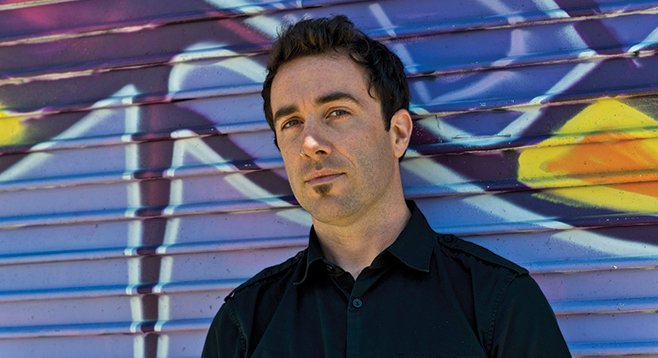 Facebook
Facebook
 X
X
 Instagram
Instagram
 TikTok
TikTok
 Youtube
Youtube

At first, it was a money thing, admits Wil Blades, of the organ. A die-hard guitarist from his teens, Blades was studying music at Berklee College when he chanced upon the mother of all electric organs, the Hammond B3. The Hammond B3 has a big amplified sound and speakers that rotate inside their cabinets. Blades liked the feel and the heft of the thing. And he especially liked that he started getting calls for gigs after he learned how to work the split keyboards and the foot pedals. That marked the end of guitar for the Chicago native. “He’s the future of the Hammond organ,” jazz organist Dr. Lonnie Smith once said. Not because Blades is that skilled (he is), but because he brings new blood to a kind of lounge jazz-funk-soul that peaked as an audience draw about 50 years ago.
The Hammond organ trio era had its own stars — musicians like Dr. Smith, Jimmy McGriff, Jimmy Smith, and Jack McDuff. Their job was to build a solo up from zero to inferno. The old masters knew precisely at what point to put the flame to the gasoline, and not a moment too soon. Hammond trio audiences were educated listeners that knew every note, every growl, and the exact sequence in which things should happen. Hammond B3 is not an easy job, which is likely why so few continued on in the tradition.
A San Franciscan now, Blades, 35, was DownBeat Magazine’s Rising Star in 2007 and 2008. In San Fran, he had John Lee Hooker’s Boom Boom Room nightclub to use as a proving grounds. It turned out to be a good place to meet people and peddle influence. The main difference between Blades and his keyboard forebears? It’s generational. Blades seems far more into soul and groove and a rocky sort of funk than in unearthing old jazz classics from the Great American Songbook.


At first, it was a money thing, admits Wil Blades, of the organ. A die-hard guitarist from his teens, Blades was studying music at Berklee College when he chanced upon the mother of all electric organs, the Hammond B3. The Hammond B3 has a big amplified sound and speakers that rotate inside their cabinets. Blades liked the feel and the heft of the thing. And he especially liked that he started getting calls for gigs after he learned how to work the split keyboards and the foot pedals. That marked the end of guitar for the Chicago native. “He’s the future of the Hammond organ,” jazz organist Dr. Lonnie Smith once said. Not because Blades is that skilled (he is), but because he brings new blood to a kind of lounge jazz-funk-soul that peaked as an audience draw about 50 years ago.
The Hammond organ trio era had its own stars — musicians like Dr. Smith, Jimmy McGriff, Jimmy Smith, and Jack McDuff. Their job was to build a solo up from zero to inferno. The old masters knew precisely at what point to put the flame to the gasoline, and not a moment too soon. Hammond trio audiences were educated listeners that knew every note, every growl, and the exact sequence in which things should happen. Hammond B3 is not an easy job, which is likely why so few continued on in the tradition.
A San Franciscan now, Blades, 35, was DownBeat Magazine’s Rising Star in 2007 and 2008. In San Fran, he had John Lee Hooker’s Boom Boom Room nightclub to use as a proving grounds. It turned out to be a good place to meet people and peddle influence. The main difference between Blades and his keyboard forebears? It’s generational. Blades seems far more into soul and groove and a rocky sort of funk than in unearthing old jazz classics from the Great American Songbook.
Comments